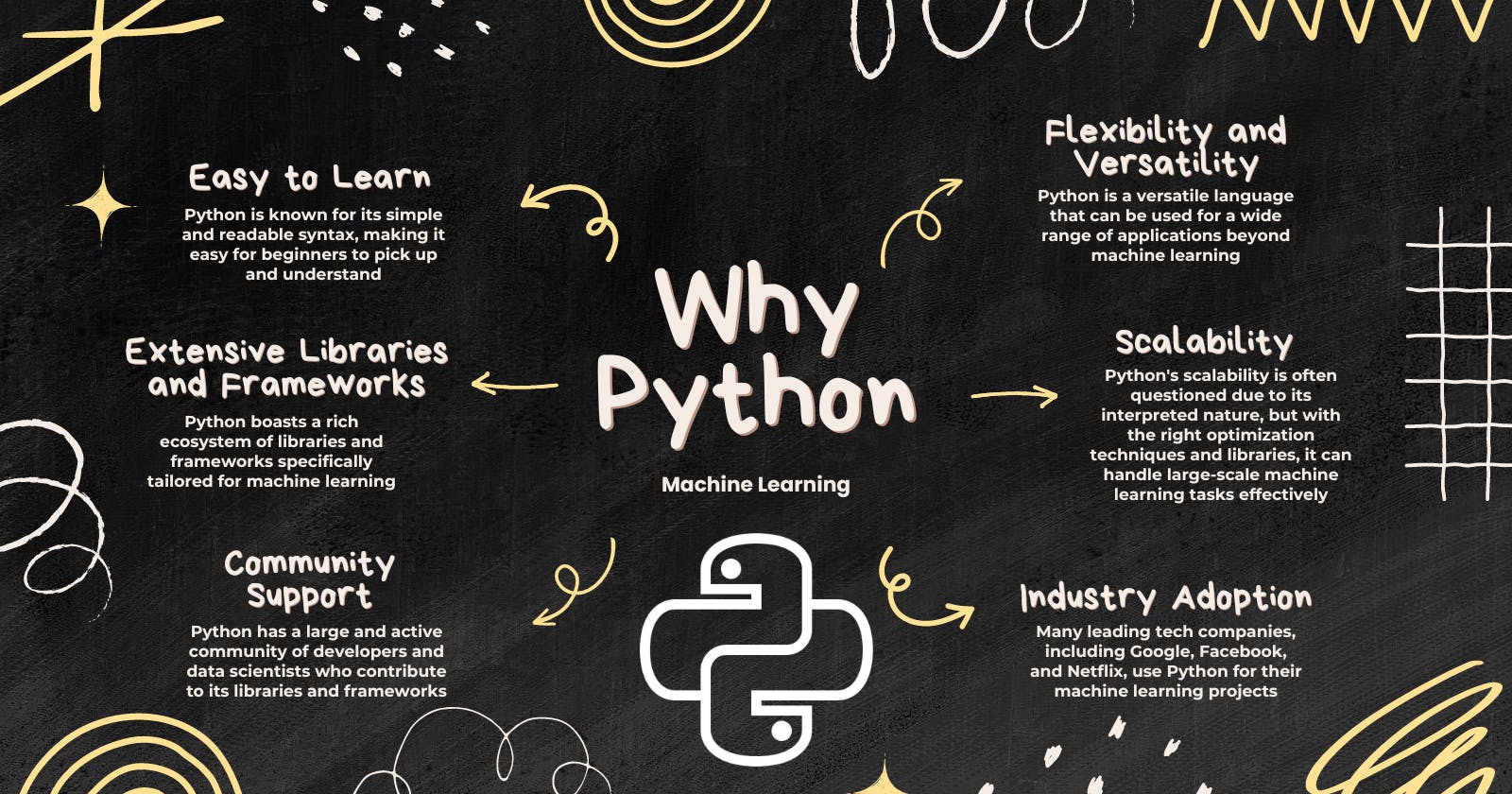Why Python for Machine Learning
Unraveling Python's Dominance in Machine Learning: Key Reasons and Real-World Applications
Python has become the go-to language for machine learning, and there are several compelling reasons for this trend. Here are some key points to consider when discussing why Python is a popular choice for machine learning:
Ease of Learning and Use: Python is known for its simple and readable syntax, making it easy for beginners to pick up and understand. This simplicity also extends to its libraries and frameworks for machine learning, such as TensorFlow, PyTorch, and scikit-learn, which are designed to be user-friendly.
Extensive Libraries and Frameworks: Python boasts a rich ecosystem of libraries and frameworks specifically tailored for machine learning. These libraries provide ready-to-use tools and functions for tasks like data preprocessing, model building, and evaluation, reducing the amount of code a developer needs to write from scratch.
Community Support: Python has a large and active community of developers and data scientists who contribute to its libraries and frameworks. This means that users can easily find help, documentation, and resources online, making it easier to overcome challenges and learn new techniques.
Flexibility and Versatility: Python is a versatile language that can be used for a wide range of applications beyond machine learning. This flexibility makes it a preferred choice for developers who want to work on different projects using the same language.
Integration with Other Languages: Python can easily integrate with other languages like C and C++, allowing developers to leverage existing code and libraries for performance-critical tasks without having to rewrite them in Python.
Scalability: Python's scalability is often questioned due to its interpreted nature, but with the right optimization techniques and libraries, it can handle large-scale machine learning tasks effectively.
Industry Adoption: Many leading tech companies, including Google, Facebook, and Netflix, use Python for their machine learning projects. This industry adoption has contributed to the popularity and growth of Python in the machine learning community.
Here are some real-world examples showcasing Python's effectiveness in machine learning applications:
Image Recognition: Python is widely used for image recognition tasks, such as in autonomous vehicles, medical imaging, and facial recognition systems. Libraries like TensorFlow and PyTorch enable developers to build sophisticated image recognition models with ease.
Natural Language Processing (NLP): Python is the language of choice for NLP tasks, including sentiment analysis, chatbots, and language translation. Libraries like NLTK, spaCy, and Transformers have made it easier to process and analyze text data.
Recommendation Systems: Python is used to build recommendation systems in e-commerce platforms, streaming services, and social media platforms. These systems use machine learning algorithms to suggest products, movies, or content based on user preferences. Libraries like scikit-learn and TensorFlow can be used for building recommendation models.
Financial Forecasting: Python is used in financial institutions for tasks like stock price prediction, risk management, and fraud detection. Libraries like pandas and NumPy are used for data manipulation and analysis, while libraries like Prophet and TensorFlow are used for forecasting models.
Healthcare: Python is used in healthcare for tasks like disease diagnosis, personalized treatment planning, and medical image analysis. Machine learning models built using Python can analyze patient data and medical images to assist healthcare professionals in making informed decisions.
Industrial Automation: Python is used in industrial automation for predictive maintenance, quality control, and process optimization. Machine learning models can analyze sensor data to predict equipment failures and optimize production processes, helping to reduce downtime and improve efficiency.
These examples demonstrate Python's versatility and effectiveness in various machine learning applications across different industries. Its rich ecosystem of libraries and easy-to-understand syntax make it a powerful tool for building machine learning models and solving complex real-world problems.
Python is the preferred language for machine learning due to its ease of use, extensive libraries, strong community support, flexibility, and industry adoption. It excels in applications like image recognition, natural language processing, recommendation systems, financial forecasting, healthcare, and industrial automation, making it versatile and effective across various industries.

